Key Highlights
- Critical Smart City Failures: Hurricane Helene (2024) and California wildfires demonstrated catastrophic communication breakdowns when incompatible emergency systems led to 31 preventable deaths and 200,000 chaotic evacuations
- Autonomous Crisis Response: Omni Cities deploy city-scale operating systems that automatically reroute traffic, open shelters, coordinate evacuations, and share real-time data across all connected systems during emergencies
- Interoperability Revolution: Unlike fragmented smart cities where “drones from one vendor can’t share data with robots from another”, Omni Cities treat urban infrastructure as unified organisms with common protocols for crisis coordination
- Equity-Centered Design: Omni Cities prioritize resilience testing in vulnerable communities first, recognizing that “systems that can’t serve everyone can’t truly serve anyone” and addressing smart city failures that favored wealthy residents
- Proven Implementation: Houston and other cities already test integrated frameworks linking climate response, public safety, and mobility systems, with over $135 billion projected cybersecurity investments by 2024
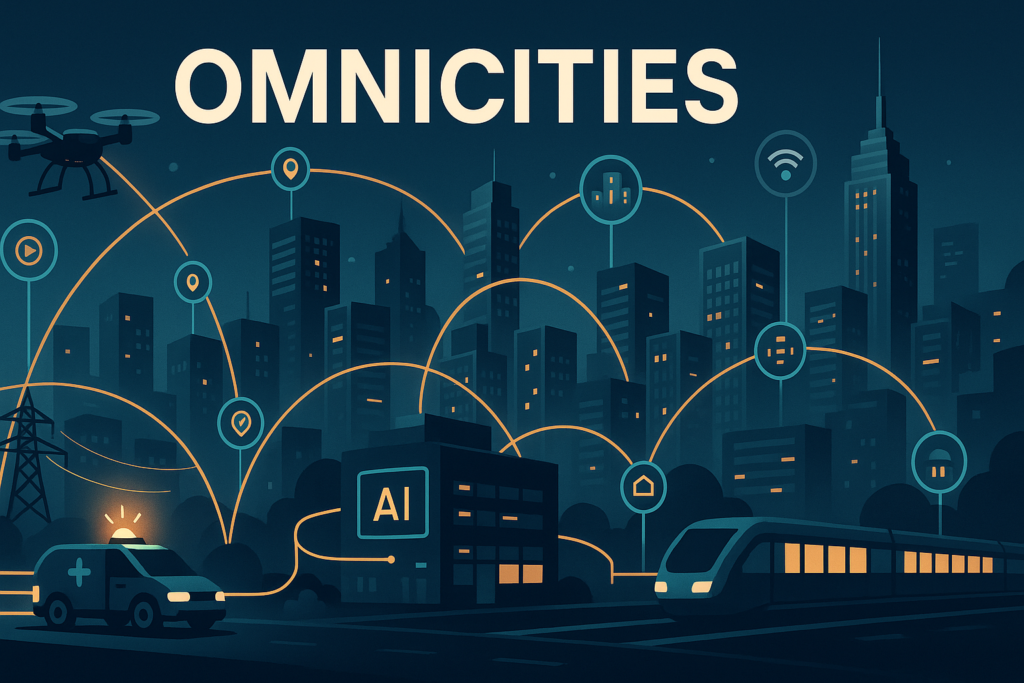
The Smart City Collapse: Why Current Models Fail
The smart city revolution promised efficient urban living through sensors and dashboards, but catastrophic failures during recent crises have exposed fundamental flaws in this approach. Cities operate like “18th-century mansions rewired with modern gadgets: functional in calm weather, yet lethal in storms”.
Hurricane Helene’s devastating impact in 2024 revealed the deadly consequences of system fragmentation. Outdoor sirens stayed silent while cell networks collapsed—not because technology failed, but because nothing was designed to work together. The result: communication breakdowns that amplified natural disaster impacts through human-made coordination failures.
California’s wildfire crisis demonstrated similar systemic failures when 200,000 evacuations became chaotic disasters. Uncoordinated shelters and communication breakdowns led to 31 preventable deaths, highlighting how technological sophistication without integration becomes dangerous liability during emergencies.
Daily operational failures compound these crisis vulnerabilities. 911 dispatch failures, fractured public transport services, and incompatible vendor systems create constant friction in urban operations. Digital archipelagos emerge where municipal departments operate in technological isolation, unable to share critical data or coordinate responses effectively.
The Omni City Vision: Unified Urban Intelligence
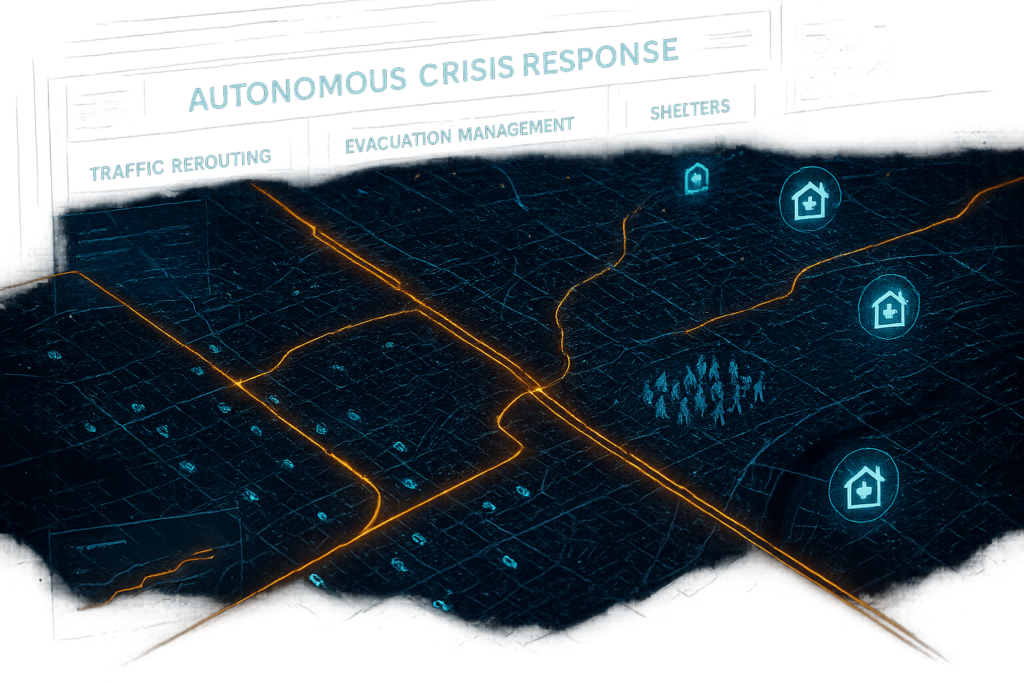
Omni Cities represent a fundamental paradigm shift from isolated smart devices to integrated urban ecosystems that operate as “unified organisms”. Unlike smart cities that collect data, Omni Cities process data in real-time to adapt, evolve, and take action as living systems.
City-Scale Operating Systems
The technological foundation of Omni Cities lies in city-scale operating systems that enable autonomous coordination across all urban functions. This unified platform treats cities as systems rather than collections of isolated apps, linking drones, sensors, robotics, transport, and emergency teams through a unified protocol layer.
Key capabilities include:
Real-time data processing from all connected urban sensors
Autonomous decision-making for traffic management and emergency response
Cross-system communication enabling seamless information sharing
Predictive analytics for proactive crisis preparation
Adaptive resource allocation based on current conditions arxiv
Autonomous Crisis Response
When wildfires approach an Omni City, the system doesn’t just sound alarms—it automatically reroutes traffic, opens shelters, coordinates evacuation routes, and ensures emergency teams receive real-time data from every connected system. This autonomous response eliminates the human coordination delays that proved fatal in recent disasters.
Houston’s pioneering efforts demonstrate practical implementation of integrated frameworks that link climate response, public safety, and mobility systems. These early implementations show how cities can evolve from reactive emergency management to proactive crisis preparation.
The Interoperability Crisis: Breaking Down Silos
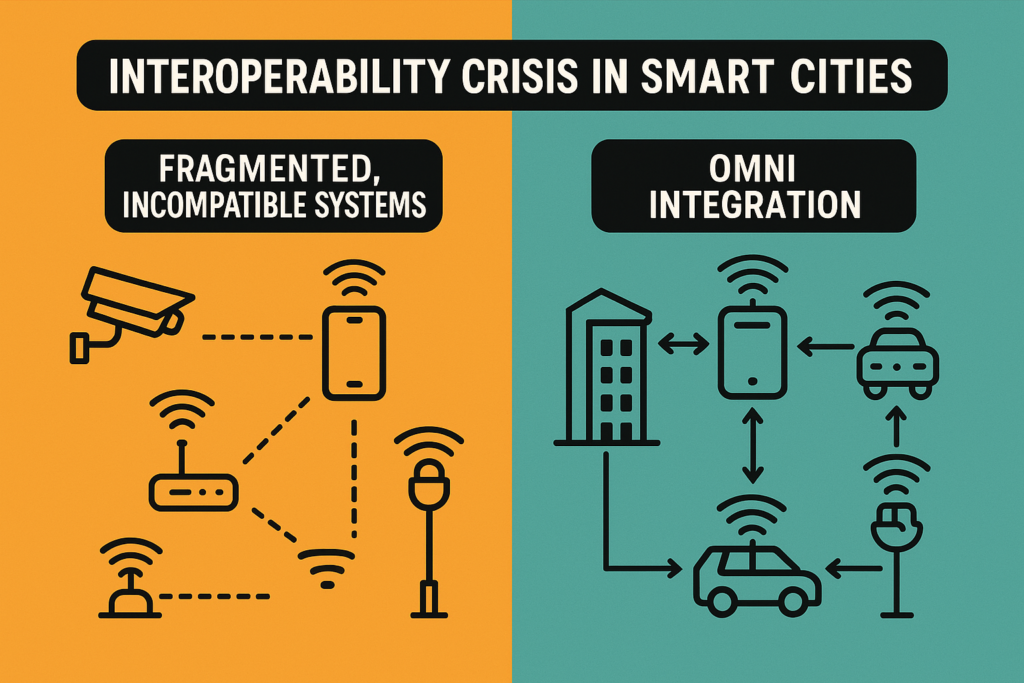
Modern cities suffer from what experts call “digital archipelagos”—isolated technology islands that cannot communicate with each other. This fragmentation represents structural failure rather than mere inefficiency, creating vulnerabilities that adversaries can exploit.
Technical Fragmentation Impacts
Vendor lock-in creates artificial barriers between city systems, where proprietary technologies prevent cross-platform communication. Different manufacturers use incompatible protocols, forcing cities to choose between vendors rather than selecting best solutions for specific needs.
ISO standards and industry initiatives like the Open & Agile Smart Cities (OASC) promote Minimal Interoperability Mechanisms (MIMs) to address these challenges. However, implementation remains fragmented across different jurisdictions and technology vendors.
Data silos prevent comprehensive urban analytics, forcing decision-makers to operate with incomplete information. Emergency responders cannot access traffic management data, while public health officials lack environmental sensor information needed for crisis response.
Security Vulnerabilities
Fragmented systems create multiple attack surfaces for cybercriminals and state-sponsored actors. Over 1,130 cyber attacks against US critical infrastructure between 2010-2014 included 14% successful disruptions, demonstrating growing threats to urban systems.
Recent attack examples illustrate escalating risks:
- Aliquippa, Pennsylvania (2023): Iranian cyber group compromised water pressure control systems
- Dallas (2017): 156 emergency sirens activated simultaneously by cybercriminals
- Lappeenranta, Finland (2016): DDoS attacks disrupted heating systems in residential buildings
AI-powered cyber attacks and weaponized drone swarms represent emerging threats that exploit communication gaps in fragmented urban networks. Current smart city architectures lack the integrated defense capabilities needed to counter sophisticated attacks.
Equity in Civic Technology: Serving Everyone First
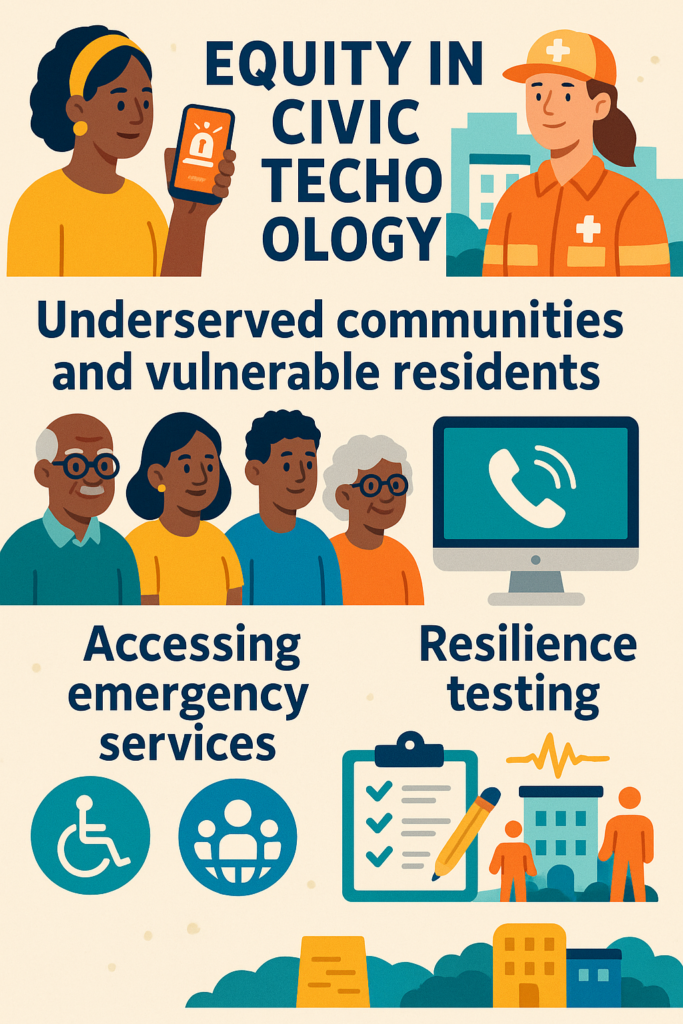
Smart city implementations have consistently failed to serve vulnerable populations, prioritizing convenience for wealthy residents over resilience for everyone. Omni Cities must fundamentally reverse this pattern by prioritizing equity in technology deployment.
The Smart City Equity Failure
Traditional smart city projects create “digital divides” where advanced services remain accessible only to residents with compatible devices, reliable internet, and digital literacy. Wealthy neighborhoods receive priority deployment of new technologies, while underserved communities continue relying on legacy systems.
Public-private partnerships often prioritize profitable areas over areas of greatest need, creating systematic inequities in service delivery. Vendor-driven deployments focus on demonstration projects in high-visibility locations rather than comprehensive coverage of vulnerable populations.
Resilience-First Design Principles
Omni Cities implement “engineering, not charity” approaches that recognize systems serving everyone are inherently more robust than systems serving only privileged populations. Resilience testing in vulnerable communities becomes primary validation for system effectiveness.
Key equity principles include:
Universal access to emergency communication systems
Multilingual interfaces for diverse populations
Offline functionality during infrastructure failures
Community-controlled data governance
Transparent algorithmic decision-making
Indonesia’s smart city governance research demonstrates how interoperability strengthens human security by reducing urban vulnerabilities and promoting economic inclusivity. Cross-sector collaboration emerged as key driver of innovation while addressing regulatory resistance and data fragmentation.
Technical Architecture: Building Resilient Systems
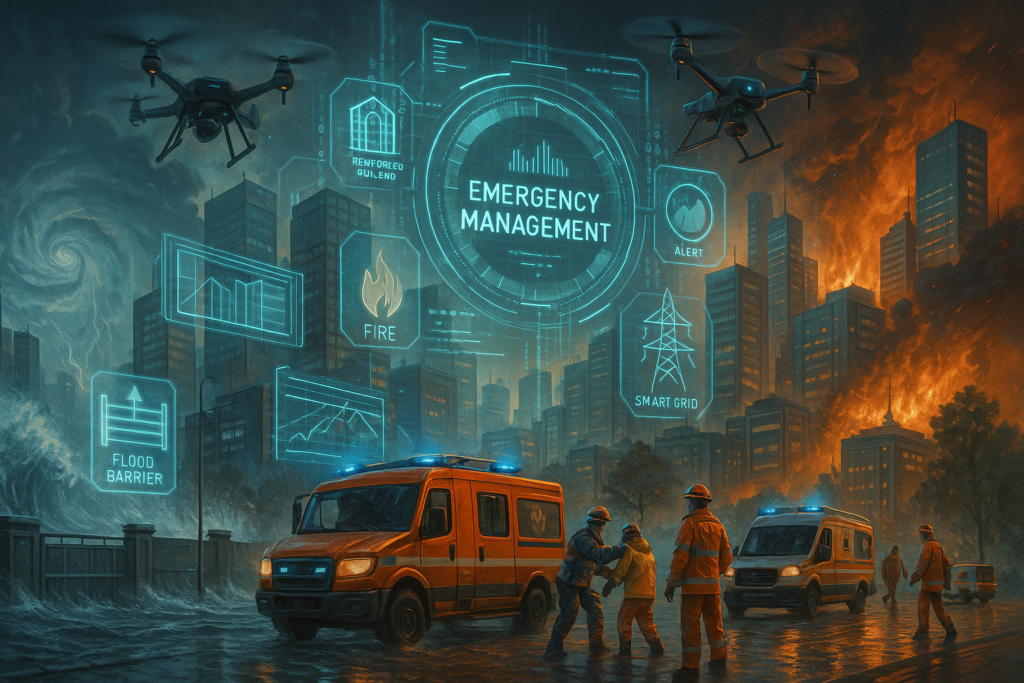
Omni Cities require sophisticated technical architectures that balance centralized coordination with distributed resilience. Traditional cloud-centric approaches create single points of failure that compromise urban resilience during infrastructure disruptions.
Distributed Intelligence Networks
Edge computing enables local decision-making that continues functioning even when central systems are compromised. Chicago’s Array of Things (AoT) demonstrates open platform approaches for rapidly embedding new sensors and computing devices across urban areas.
Resilient architecture must balance distributed and central functions to avoid cascading failures. Local autonomous systems handle immediate responses while city-scale coordination manages resource allocation and strategic planning.
Privacy-preserving technologies enable data sharing without compromising individual privacy or creating surveillance infrastructure. Edge processing analyzes sensitive data locally while sharing only aggregated insights needed for city-wide coordination.
AI Integration and Automation
Machine learning systems enable predictive analytics for proactive crisis management rather than reactive emergency response. Pattern recognition identifies emerging threats before they escalate into major crises.
Automated systems must include human oversight and ethical protocols to prevent algorithmic bias and ensure accountability. Transparent decision-making processes allow citizens to understand and challenge automated choices that affect their lives.
Continuous learning enables systems to improve performance based on real-world outcomes and community feedback. Adaptive algorithms adjust response strategies based on effectiveness in different scenarios and community contexts.
Implementation Strategies: Starting the Transformation
Local governments can begin Omni City development without federal permission or massive infrastructure investments. Strategic approaches focus on building foundations for future integration rather than attempting complete transformation immediately.
Immediate Action Steps
Interoperability standards for new public technology ensure future compatibility while avoiding vendor lock-in. Procurement policies requiring open protocols and data portability create pressure for vendor compliance.
Transparent audit systems for automated decisions build public trust while identifying algorithmic bias and system failures. Regular reporting on system performance and equity impacts enables continuous improvement.
Pilot deployments in underserved communities validate system effectiveness while addressing historical inequities in technology access. Community partnerships ensure local needs drive technology implementation rather than vendor capabilities.
Regional Coordination
Metropolitan cooperation enables resource sharing and coordinated response across municipal boundaries. Regional data sharing agreements facilitate emergency coordination while respecting local sovereignty.
University partnerships provide research capabilities and talent development for ongoing system improvement. Academic collaboration enables independent evaluation of system performance and equity impacts.
International standards participation ensures global compatibility while sharing costs of technology development. Cities can leverage global research and best practices rather than developing solutions in isolation.
Global Examples and Lessons Learned
European Integration Efforts
European Union initiatives like WiFi4EU demonstrate region-wide approaches to digital connectivity and smart city development. Sustainability focus integrates environmental goals with digital transformation, creating comprehensive urban strategies.
Cross-border collaboration enables smaller cities to access technologies and expertise typically available only to major metropolitan areas. Shared standards reduce development costs while ensuring compatibility across different nations.
GDPR compliance provides privacy frameworks that balance data sharing with individual rights. European approaches demonstrate how regulatory frameworks can enable innovation while protecting citizen interests.
Asian Innovation Leadership
Southeast Asian cities demonstrate rapid smart city adoption with focus on social equity and human security. Indonesia’s research shows how interoperability strengthens governance while addressing urban vulnerabilities.
Cross-sector collaboration emerges as critical factor in successful implementations, requiring coordination between government, private sector, and civil society organizations. National digital strategies provide policy frameworks for local implementation.
North American Pilot Projects
Houston’s integrated systems link climate response, public safety, and mobility in operational pilot programs. Real-world testing provides practical insights for scaling successful approaches to other cities.
Chicago’s Array of Things demonstrates open platform approaches that enable rapid innovation while maintaining interoperability. University partnerships provide research capabilities and neutral evaluation of system performance.
Future Challenges and Opportunities
Cybersecurity Evolution
AI-powered threats require equally sophisticated defenses that adapt to emerging attack vectors. Coordinated cyber warfare targeting multiple city systems simultaneously demands integrated defense strategies.
International cooperation on cybersecurity standards and threat intelligence sharing becomes essential for protecting urban infrastructure. Cities must coordinate defenses against state-sponsored attacks that exceed local capabilities.
Resilient design principles ensure critical functions continue operating even during successful attacks on some system components. Graceful degradation maintains essential services while compromised systems are isolated and repaired.
Climate Adaptation Integration
Climate change intensifies urban challenges while creating new requirements for adaptive infrastructure. Omni Cities must integrate climate resilience with technological capabilities to address compound threats.
Extreme weather events test system resilience while providing opportunities to validate and improve automated response capabilities. Learning from failures enables continuous improvement in crisis response.
Sustainability requirements drive energy-efficient technologies and circular economy principles in urban system design. Green technologies must integrate seamlessly with digital infrastructure to achieve environmental goals.
The Economic Imperative
Investment Requirements
Cybersecurity costs for smart city infrastructure between 2020-2024 are projected to exceed $135 billion, making security design comparable to development costs. Omni Cities must integrate security from initial design rather than retrofitting protection.
Return on investment calculations must include avoided costs from prevented disasters and improved emergency response. Houston’s investments in integrated systems reduce response times and save lives while demonstrating economic benefits.
Shared infrastructure costs across multiple cities enable smaller municipalities to access advanced technologies through regional cooperation. Economies of scale make sophisticated systems affordable for broader urban populations.
Economic Development Impacts
Technology sectors concentrate in cities with advanced digital infrastructure, creating positive feedback loops between innovation and urban development. Omni Cities attract businesses and talent by providing superior infrastructure.
Improved emergency response and reduced disaster impacts protect economic activity while maintaining business continuity during crisis events. Resilient infrastructure becomes competitive advantage for economic development.
Innovation ecosystems emerge around advanced urban technologies, creating local employment and entrepreneurship opportunities. University partnerships and technology clusters reinforce economic benefits of advanced urban systems.
Conclusion
Omni Cities represent the inevitable evolution beyond smart cities, driven by undeniable evidence that fragmented urban systems fail catastrophically during modern threats. Hurricane Helene’s 31 preventable deaths and chaotic wildfire evacuations demonstrate that technological sophistication without integration becomes liability rather than asset.
The city-scale operating system concept transforms urban infrastructure from isolated gadgets into unified organisms capable of autonomous crisis response. When wildfires approach, traffic automatically reroutes, shelters open, and emergency teams receive coordinated real-time data—eliminating the human coordination delays that prove fatal in current systems.
Interoperability emerges as strategic imperative rather than technical preference, enabling cities to avoid vendor lock-in while building resilient ecosystems that adapt to emerging challenges. Houston’s integrated frameworks and Chicago’s open platforms demonstrate practical pathways for immediate implementation.
Equity-centered design fundamentally reverses smart city failures that served wealthy residents while neglecting vulnerable populations. Omni Cities prioritize resilience testing in underserved communities, recognizing that “systems that can’t serve everyone can’t truly serve anyone”. This approach creates inherently stronger systems while addressing historical injustices.
Technical architecture balances distributed intelligence with centralized coordination, ensuring local autonomy during infrastructure failures while enabling city-wide resource optimization. Edge computing and privacy-preserving technologies address legitimate concerns about surveillance and data control.
Implementation strategies enable immediate progress without federal permission or complete infrastructure replacement. Interoperability standards for new technology, transparent audit systems, and community-centered pilots create foundations for future integration while delivering immediate benefits.
Global examples from European integration efforts to Asian innovation leadership demonstrate diverse pathways toward Omni City implementation. Regional cooperation and international standards reduce costs while ensuring compatibility across different contexts.
Economic imperatives drive adoption as cybersecurity costs approach development expenses and climate disasters threaten urban economies. Over $135 billion in projected security investments makes integrated design economically essential rather than optional enhancement.
The window for transformation is rapidly closing as AI-powered threats, climate disasters, and cyber warfare evolve faster than fragmented urban systems can adapt. Cities that evolve first will define governance in the age of artificial intelligence while protecting their residents from escalating threats.
Omni Cities are not distant vision but immediate necessity. Every coordination failure, every preventable death, every communication breakdown during urban crises demonstrates the urgent need for fundamental transformation. The question is not whether cities will evolve, but which ones will evolve first.
Mains Question
“Discuss the limitations of the ‘smart city’ model in addressing urban challenges, and explain how the ‘Omni City’ paradigm—based on interoperability and resilience—offers a more robust framework for future urban governance.”

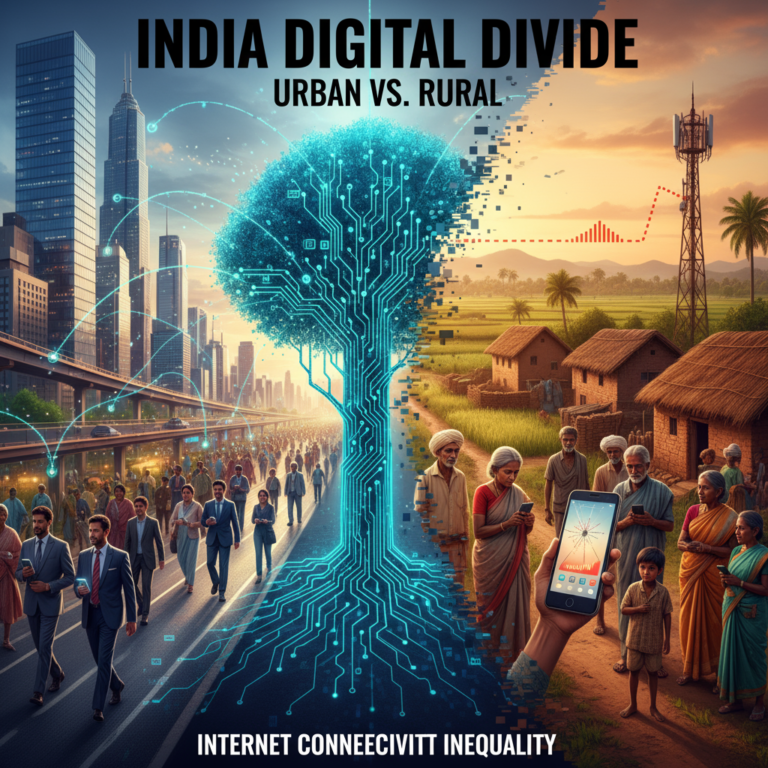







+ There are no comments
Add yours